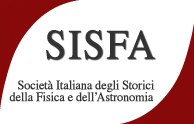Conveners
Da Newton a Maxwell
- Ivana Gambaro (DAFIST, Università di Genova)
The involvement of d’Alembert in musical issues has its roots in 1749, when Jean Philippe Rameau submitted to the Académie des sciences de Paris, for approval, a manuscript containing the elements of his musical theory. Even though d’Alembert praised Rameau’s theory he did not appreciate his prose, and for this reason he felt impelled to write a more readable treatise which originated the...
Both in A treatise on electricity and magnetism (1873, 2 vols.) and A dynamical theory of the electromagnetic field (1864) Maxwell converted in a mathematical language the main content of the Experimental Researchers in Electricity by Michael Faraday. He went beyond the Newtonian approach reaching a new physics mathematics based on the concept of energy instead of that of force. First, he...
The Proposition LXVI (Book I, Newton’s Principia) with its 22 corollaries is the longest proposition of Newton’s masterpiece. It faces the three bodies-problem. This problem cannot be solved in general terms; Newton by few qualitative indications solved it in specific cases. Based on previous and current research on Newton’s Geneva Edition ([1739-1742]1822), we remark that Geneva Edition's...

